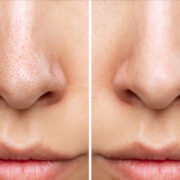A cavity between teeth, also known as an interproximal cavity, is a common dental condition characterized by the decay or damage to the tooth structure located between two adjacent teeth. This type of cavity can occur when bacteria and plaque accumulate in the tight spaces between teeth, leading to tooth decay. Understanding the causes, signs, and potential complications of a cavity between teeth is essential to promote good oral health. In this article, we will explore the causes of a cavity between teeth, the signs and symptoms to watch out for, the complications that can arise if left untreated, the diagnosis methods used by dentists, the available treatment options, and preventive measures to reduce the risk of developing interproximal cavities. By learning more about this condition, you can take steps to maintain a healthy and cavity-free smile.
What is a Cavity Between Teeth?
A cavity between teeth is a common dental issue caused by tooth decay. What is a Cavity Between Teeth? It occurs when the protective enamel on the surface of a tooth gets damaged, allowing bacteria to attack the underlying dentin. Cavities between teeth can lead to pain, sensitivity, and even tooth loss if left untreated. Regular dental check-ups and proper oral hygiene, including brushing and flossing, are essential for preventing and detecting cavities between teeth. To maintain good oral health, avoid sugary foods, practice good oral hygiene habits, and visit your dentist regularly for cleanings and exams.
Cause of Cavity Between Teeth
Discovering the cause of that pesky cavity between your teeth is key to maintaining a healthy smile. Let’s dive into the culprits behind this dental predicament. From poor oral hygiene to pesky plaque buildup, and the devilishly sticky food particles that become trapped between our pearly whites, we’ll explore the factors that can lead to this unwelcome cavity. Prepare to uncover the secrets behind this dental mystery and learn how to prevent it from haunting your oral health.
Poor Oral Hygiene
Poor oral hygiene is an underlying factor behind the occurrence of cavities between teeth. Neglecting regular brushing and flossing routines allows for the accumulation of plaque, ultimately leading to tooth decay. The presence of food particles trapped in between teeth also contributes significantly to the formation of cavities. Clear indications of cavities located between teeth include tooth sensitivity, pain, and noticeable discoloration. Neglecting to address cavities can ultimately result in complications like tooth infections and abscesses. The diagnosis for such cavities typically involves visual examinations as well as dental X-rays. Multiple treatment options exist, including dental fillings, crowns, root canals, or even tooth extractions. To effectively prevent the development of cavities between teeth, it is crucial to engage in daily brushing and flossing, attend regular dental check-ups, and maintain a healthy diet that limits the intake of sugary foods.
Plaque Buildup
Plaque buildup is a common cause of cavities between the teeth. When plaque, a sticky film containing bacteria, is not properly eliminated through brushing and flossing, it can gather between the teeth. Over time, the bacteria in plaque produce acids that corrode and weaken tooth enamel, resulting in cavities. Regular dental cleanings are essential to remove plaque and prevent the formation of cavities. Maintaining good oral hygiene, including brushing twice a day and flossing daily, can help reduce plaque buildup and uphold oral health. Addressing plaque buildup promptly is crucial in order to prevent further issues, such as tooth pain and infection.
In ancient Egypt, individuals utilized a natural toothpaste composed of crushed eggshells, myrrh, and pumice to combat plaque buildup and maintain clean teeth. This ancient mixture demonstrated the long-established recognition of oral hygiene’s significance over centuries.
Food Trapped between Teeth
Food that gets trapped between our teeth can contribute to the development of cavities and other dental issues. It is crucial to properly remove these food particles in order to maintain good oral hygiene.
- Flossing: Regularly floss between your teeth to effectively eliminate stubborn food particles that cannot be removed by brushing alone.
- Interdental brushes: Utilize interdental brushes to clean between your teeth, especially if there are gaps or spaces where food tends to get stuck.
- Water flossers: Water flossers can be an efficient tool for dislodging and removing food particles between your teeth.
- Mouthwash: Rinse your mouth with an antibacterial mouthwash to help flush out any remaining food debris.
- Dental picks: Dental picks are handy little tools specifically designed to clean between your teeth. They can be incredibly useful for removing food that is stuck in tight spaces.
Always remember, practicing proper oral hygiene techniques, including regular brushing and flossing, can significantly help prevent food from becoming trapped between your teeth and reduce the risk of cavities and other dental problems.
Signs and Symptoms of a Cavity Between Teeth
Feeling a twinge of pain when you eat something cold or hot? Struggling with tooth sensitivity, discoloration, or unexplained discomfort? In this section, we’ll uncover the signs and symptoms of a cavity between teeth. From tooth sensitivity to discoloration, we’ll explore the various indicators that may suggest the presence of a cavity. Get ready to arm yourself with knowledge and take control of your dental health.
Tooth Sensitivity
Tooth Sensitivity is a characteristic symptom commonly associated with a cavity forming between teeth. It occurs when the natural protective layer of enamel becomes worn down, thereby exposing the underlying dentin and causing heightened sensitivity to hot, cold, sweet, or acidic foods and drinks. Gum recession and enamel erosion are additional factors that can contribute to tooth sensitivity. Managing this sensitivity entails the use of desensitizing toothpaste, avoiding abrasive toothbrushes, and maintaining good oral hygiene practices. To accurately identify the root cause of tooth sensitivity, it is crucial to seek a comprehensive examination from a dentist. As a helpful tip, opt for a toothbrush with soft bristles and refrain from brushing too forcefully to prevent further wear of the enamel and exacerbating tooth sensitivity.
Tooth Pain
Tooth pain is a common symptom of a cavity between teeth. It is often described as sharp or throbbing pain that can be triggered by hot or cold foods, sweets, or pressure on the affected tooth. The pain occurs when the cavity reaches the inner layer of the tooth where the nerves are located. If left untreated, the cavity can worsen, leading to more severe tooth pain and potential complications. It is important to visit a dentist for a proper diagnosis and treatment options such as dental fillings or crowns to alleviate tooth pain and prevent further damage.
Tooth Discoloration
- Tooth discoloration, which is a common sign of a cavity between teeth, can be addressed with the following causes and treatment options:
- Poor oral hygiene, such as inadequate brushing and flossing, can result in plaque buildup, leading to tooth discoloration.
- Another cause of tooth discoloration is food trapped between teeth. Food particles can get stuck in the cavity, causing staining and discoloration.
- For treatment options, dental fillings can restore the tooth’s appearance and prevent further decay. Dental crowns provide a natural-looking solution for more severe discoloration. In cases where the cavity has reached the inner pulp, a root canal may be necessary to save the tooth. In extreme cases, removing the affected tooth may be the best option.
By addressing tooth discoloration caused by a cavity between teeth, you can maintain a healthy and bright smile.
Complications of Untreated Cavity Between Teeth
If left untreated, a cavity between teeth can lead to various complications, including toothache, infection, abscess formation, gum disease, and even tooth loss. Failure to properly clean a cavity between teeth allows bacteria to thrive and cause damage, posing a significant challenge. As time progresses, the decay can delve deeper into the tooth, affecting the nerve and blood vessels. To prevent these complications and maintain oral health, it is crucial to promptly address cavities through dental treatment.
In 1856, a notable dentist named Robert Arthur made an extraordinary breakthrough in dentistry by successfully performing the initial recorded root canal treatment on a live patient. This groundbreaking procedure not only alleviated pain but also preserved natural teeth, completely transforming dental care and leading to further advancements in treating the complications that arise from an untreated cavity between teeth.
Diagnosis of Cavity Between Teeth
Get ready to dive into the world of diagnosing cavity between teeth! We’ll explore two key methods—visual exam and dental X-rays—that experts use to identify this dental issue. With the help of these techniques, dentists can uncover hidden cavities and provide targeted treatment. So, buckle up and join us on this journey to gain insights into diagnosing cavity between teeth for a healthier and brighter smile!
Visual Exam
A visual exam, or visual examination, plays a crucial role in diagnosing cavities between teeth. It involves several steps:
- Inspection: During a visual exam, the dentist carefully inspects the teeth for any indications of decay, such as dark spots or pits.
- Probe: As part of the visual examination, the dentist may use a dental tool to gently explore the surfaces of the teeth, checking for any soft areas or roughness that could potentially indicate the presence of a cavity.
- X-rays: In certain cases, x-rays may be taken as a complementary step to obtain a more comprehensive view of the teeth. This aids in the identification of cavities that may not be immediately visible during the visual exam.
- Recording findings: Any cavities or areas of concern detected during the visual exam are documented by the dentist. These findings provide crucial information for developing appropriate treatment plans.
A visual exam is a crucial component of the overall process involved in identifying and assessing cavities between teeth. By undergoing this examination, dentists can develop well-informed treatment plans to effectively address the issue of cavities.
Dental X-rays
Dental x-rays are a crucial tool in diagnosing and treating cavities between teeth. They provide a clear image of the area, helping dentists identify the extent of the cavity and determine the most appropriate treatment. The table below summarizes the key aspects of dental x-rays in cavity detection:
| Aspect | Importance |
|---|---|
| Radiographic view | Offers a comprehensive view of the affected area |
| Detection ability | Can identify cavities in the early stages, before they become visible or cause symptoms |
| Accuracy | Provides detailed information to guide treatment decisions |
| Safety | Uses minimal radiation exposure, posing a low risk to patients |
| Frequency | Recommended based on individual needs and risk factors |
To ensure thorough cavity detection and overall dental health, it is essential to follow the dentist’s recommendations regarding the frequency of dental x-rays. Remember to maintain regular dental check-ups and practice good oral hygiene habits.
Treatment Options for Cavity Between Teeth
When it comes to treating a cavity between teeth, we have several options to consider. From dental fillings to dental crowns, root canals to tooth extraction, each sub-section explores a unique treatment approach. So, whether you’re looking for a conservative solution or a more extensive procedure, there’s a treatment option that suits your needs. Let’s dive into the world of dental care and discover the best path to tackle that pesky cavity between your teeth!
Dental Fillings
Dental fillings are a common treatment option for cavities between teeth. The procedure involves removing the decayed portion of the tooth and filling the space with a material like composite resin or amalgam. Dental fillings restore the tooth’s structure and prevent further decay. They can be color-matched to blend with the natural tooth, providing an aesthetic solution. It is important to maintain good oral hygiene and regular dental check-ups to prevent and detect cavities early. Limiting sugary foods and practicing a healthy diet also contribute to cavity prevention. Dental fillings play a crucial role in maintaining oral health and preserving natural teeth.
Dental Crowns
Dental crowns are a common and effective treatment option for cavities located between teeth. These crowns play a crucial role in providing much-needed protection and support to weakened or damaged teeth.
- Material: Dental crowns can be crafted from a variety of materials, including porcelain, metal, or a combination of both.
- Procedure: The skilled dentist will begin the process by carefully preparing the affected tooth, removing any decay and shaping it appropriately. To ensure a precise fit, an impression of the tooth is taken, which is then used to create a customized crown. Finally, the crown is placed over the tooth and secured firmly using dental cement.
- Benefits: One of the significant advantages of dental crowns is their ability to restore both the appearance and functionality of a tooth. Moreover, they can improve bite alignment and effectively prevent further decay.
- Maintenance: It is of utmost importance to maintain proper oral hygiene practices, including regular brushing and flossing, to ensure the longevity and durability of the crown.
Throughout history, dental crowns have played a crucial role and have been in use for centuries. Ancient civilizations like the Etruscans and Egyptians have left evidence of utilizing gold crowns, exemplifying the enduring importance of dental crowns in the field of oral health care.
Root Canal
A root canal is a dental procedure that is used to treat a cavity between teeth that has reached the inner pulp. During this procedure, the infected pulp is removed, the area is cleaned and disinfected, and finally, the tooth is filled and sealed. This effective treatment not only helps to save the tooth but also provides relief from the associated pain. Typically, root canals are performed by a specialized dentist known as an endodontist, who has expertise in treating the inner tooth. It is crucial to promptly address a cavity between teeth, as neglecting it can lead to complications such as abscesses or even tooth loss. Always remember that maintaining good oral hygiene and scheduling regular dental check-ups are key preventive measures in avoiding cavities between teeth.
Tooth Extraction
Tooth extraction, a dental procedure, is performed to remove a tooth that is severely damaged or beyond repair. This process involves several steps:
- Anesthesia: To minimize pain and discomfort, the area around the tooth is numbed with local anesthesia during the tooth extraction procedure.
- Loosening the tooth: Various instruments are used by the dentist to gently loosen the tooth from its socket.
- Extracting the tooth: The tooth, carefully, is removed from the socket using forceps or dental elevators during the tooth extraction.
- Post-extraction care: Instructions on how to care for the tooth extraction site and manage any discomfort or swelling are provided by the dentist.
- Follow-up appointments: Monitoring the healing process and ensuring proper recovery requires scheduling follow-up visits after tooth extraction.
Prevention of Cavity Between Teeth
Preventing cavity between teeth is essential for maintaining oral health and a bright smile. In this section, we’ll explore three key practices that can help you prevent this common dental issue. From the importance of daily brushing and flossing to the benefits of regular dental check-ups and maintaining a healthy diet while limiting sugary foods, we’ll provide you with valuable insights and tips to keep your teeth cavity-free. So let’s dive in and take control of our dental health!
Daily Brushing and Flossing
Daily brushing and flossing are vital for maintaining oral health and preventing cavities between teeth.
- Brush twice a day: Use a soft-bristled toothbrush and fluoride toothpaste to thoroughly clean all surfaces of the teeth.
- Floss once a day: Gently slide dental floss between teeth to remove plaque and food particles that brushing alone may miss.
- Use proper technique: Hold the toothbrush at a 45-degree angle and brush in circular motions. When flossing, curve the floss around each tooth in a C-shape and glide it up and down.
- Rinse with mouthwash: Swish with an antimicrobial mouthwash to help kill bacteria and freshen breath.
- Replace toothbrush regularly: Replace your toothbrush every three to four months or when the bristles become frayed.
By incorporating these daily habits, you can effectively maintain good oral hygiene and reduce the risk of developing cavities between your teeth.
Regular Dental Check-ups
Regular dental check-ups are the cornerstone of maintaining good oral health and preventing cavities between teeth. Dentists employ visual examinations and dental x-rays to spot early signs of cavities. This allows for timely treatment, including dental fillings or crowns, to thwart further complications like tooth pain or discoloration. In addition to addressing existing cavities, regular check-ups also empower dentists to offer preventive care, such as professional teeth cleaning and oral hygiene instructions. It is important to remember that prevention is key, so it is advisable to schedule regular dental check-ups, ideally every six months, to help you sustain a healthy smile. Pro-tip: Do not wait for symptoms to arise; prioritize regular dental check-ups for optimal oral health.
Healthy Diet and Limiting Sugary Foods
A healthy diet plays a crucial role in preventing cavities between teeth. By incorporating the following practices into your daily regimen, you can effectively protect your teeth:
- Minimize the consumption of sugary foods and drinks as they contribute to the buildup of plaque and promote tooth decay.
- Opt for foods that are rich in calcium, such as milk, cheese, and leafy greens, as they help strengthen tooth enamel.
- Ensure your diet includes foods that are high in vitamin C, like citrus fruits and berries, to promote proper gum health.
- Incorporate crunchy fruits and vegetables into your meals, such as apples and carrots, as they stimulate saliva production and aid in cleaning your teeth.
- Furthermore, ensure you consume an ample amount of water to wash away food particles and maintain adequate saliva production.
By following a healthy diet and limiting your intake of sugary foods, you can significantly improve the health of your teeth.
Frequently Asked Questions
What are the signs of a cavity between teeth?
Signs of a cavity between teeth may include tooth sensitivity to hot or cold temperatures, persistent toothache, dark spots or visible holes in the tooth, and the presence of pus, which may indicate the formation of an abscess.
How can I prevent cavities between teeth?
You can prevent cavities between teeth by maintaining a solid oral hygiene routine, including brushing your teeth with a soft-bristled toothbrush and toothpaste with fluoride in a circular pattern, flossing regularly to remove dental plaque, limiting sugar intake, avoiding tobacco products, and visiting the dentist for preventive cleanings and examinations.
What is the treatment for a cavity between molars?
The treatment for a cavity between molars depends on the severity of the cavity. If detected early, the cavity can be treated with fluoride gel to recalcify the enamel. However, for deeper cavities, the dentist may choose to fill the affected tooth with either amalgam or composite fillings. Severe cavities may require other treatment methods such as dental crowns or root canals.
How are cavities between teeth diagnosed?
Cavities between teeth can be diagnosed by a dentist through visual examination and X-rays, such as bitewing X-rays. X-rays can help reveal the presence of cavities between teeth that may not be visible to the naked eye.
How common are cavities in permanent teeth?
Cavities in permanent teeth are quite common, with 92% of U.S. adults ages 20 to 64 having had cavities in their permanent teeth. It is important to maintain healthy habits and regular dental care to prevent cavities and maintain oral health.
Does brushing and flossing alone prevent cavities between molars?
Regular brushing alone may not effectively clean between molars, so it is necessary to also floss regularly to prevent plaque buildup and cavities between molars. Implementing proper oral hygiene habits, including brushing, flossing, and regular dental checkups, is crucial for preventing cavities.






